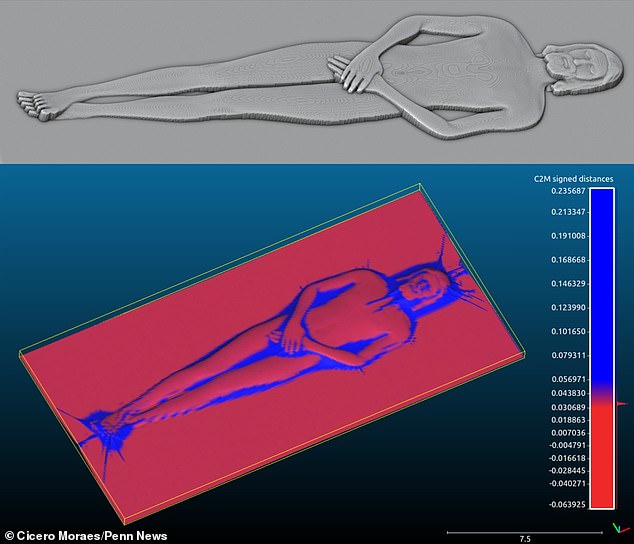The face on the Shroud of Turin could not have come from Jesus’ head, and it is doubtful it ever touched it, an explosive new study suggests.
Marked with a faint impression of a body and face, many believe the artifact is the actual cloth used to wrap Christ’s corpse after his crucifixion.
But its documented history only begins in the mid-14th century and it has been a source of skepticism for almost as long, with many dismissing it as a medieval forgery.
Now, a new study has discovered that the impression on the Shroud could not have been made by a three-dimensional human body, but was perhaps a bas-relief, a superficial carving.
To reach this conclusion, Cicero Moraes, author of the new study, created a virtual simulation in which a cloth was placed over a body in an attempt to replicate the famous shroud.
But the virtual cloth, when laid flat, showed “a distorted and significantly more robust image” than that of the shroud, as a result of the change from 3D to 2D.
The study found that only by repeating the process with a bas-relief instead of a body, could an impression similar to that of the artifact be made.
Moraes, a Brazilian forensic expert and 3D illustrator, said: ‘The explanation for the differences is very simple.
The study concludes that the impression on the Shroud could not have been caused by a three-dimensional human body, but perhaps by a bas-relief, a superficial carving (above)
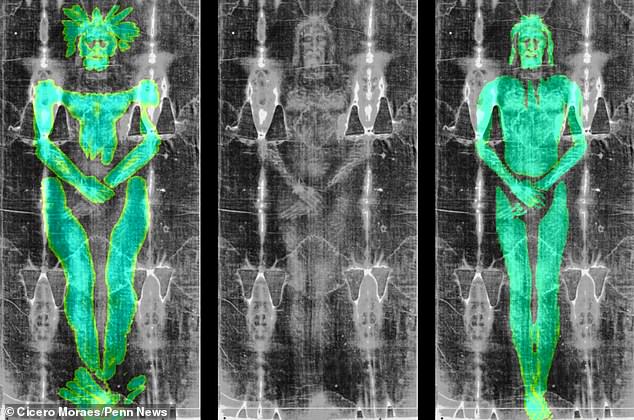
Cicero Moraes, author of the new study, created a virtual simulation in which a cloth was placed over a body in an attempt to replicate the famous Shroud.
‘When you wrap a 3D object with a cloth and that object leaves a pattern like blood stains, these stains generate a more robust and more deformed structure in relation to the source.
“So, generally speaking, what we see as a result of printing spots on a human body would be a more swollen and distorted version of it, not an image that looks like a photocopy.
“However, a bas-relief would not cause the image to warp, resulting in a figure that looks like a photocopy of the body.”
An image of the impression left by a 3D body shows the striking difference with the shroud.
The scalp and toes extend strangely outwards, while large parts of the torso, groin, and neck area have not been captured at all, and the overall resemblance is very broad.
Meanwhile, the image of the impression left by a shallow bas-relief offers a good recreation of the shroud image.
By way of explanation, Moraes gave the example of the mask of Agamemnon, a gold death mask that is supposed to have been molded from the face of the ancient Mycenaean king.
It looks too wide for a human face, but Moraes said this is actually a normal distortion.
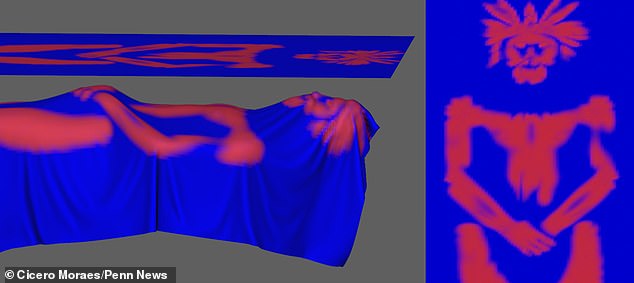
The virtual cloth, when laid flat, showed “a distorted and significantly more robust image” than that of the shroud, as a result of the change from 3D to 2D.
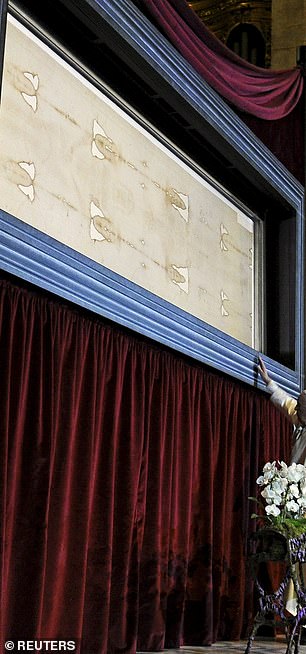
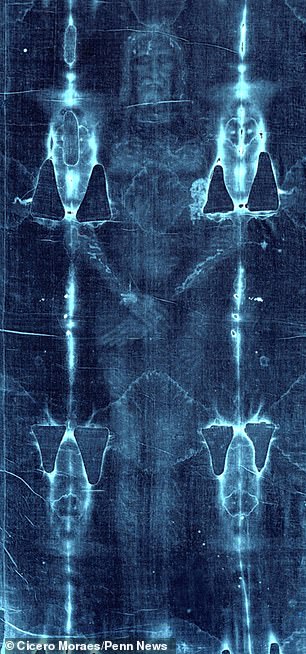
For centuries, Catholics have flocked to the Italian city of Turin to be in the presence of its famous Shroud. The venerated piece of linen, measuring 14 feet 5 inches by 3 feet 7 inches, has a faint image of the front and back of a man, interpreted by many as Jesus Christ.
He said: ‘Any careful adult can try this at home.
‘For example, painting your face with some pigmented liquid, using a large napkin, paper towel or even a cloth, and wrapping it around your face,
‘Then take out the fabric, spread it on a flat surface and observe the resulting image.
‘This deformation is known as the ‘Agamemnon mask’ effect, as it resembles that ancient artifact.’
Moraes is well known for forensically reconstructing the faces of historical figures from their skulls.
He doubts that the shroud ever touched Jesus’ body.
“I think the possibility of this happening is very remote,” he said.
And although he is reluctant to dismiss the artifact as a forgery, he believes its qualities are more artistic than historical.
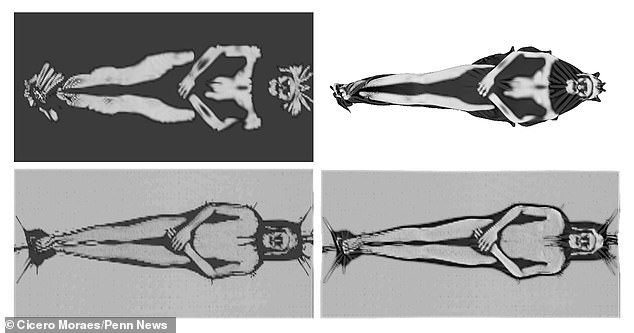
Printing blobs of a human body would be “bloated and distorted” (above), not an image that “looks like a photocopy” (below)
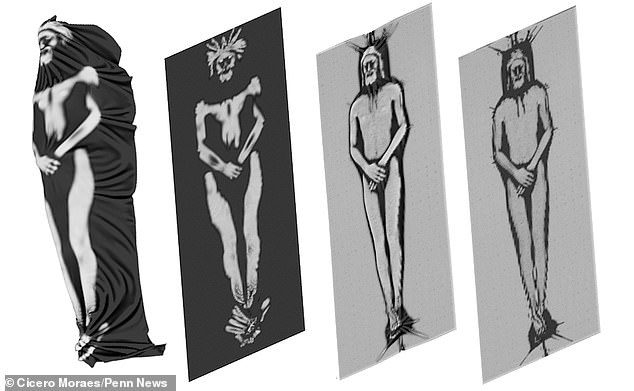
The explosive study follows a scientist’s high-profile claims that the object actually engulfed Jesus.
He said: ‘People generally divide into two camps in debates.
‘On one side are those who think that it is an authentic shroud of Jesus Christ, on the other, those who think that it is a forgery.
‘But I am inclined towards another approach: that it is actually a work of Christian art, which managed to convey the desired message with great success.
“It seems to me rather a non-verbal iconographic work that has very successfully fulfilled the purpose of the religious message it contains.”
For centuries, Catholics have flocked to the Italian city of Turin to be in the presence of its famous Shroud.
The venerated piece of linen, measuring 14 feet 5 inches by 3 feet 7 inches, has a faint image of the front and back of a man, interpreted by many as Jesus Christ.
Believers say it was used to wrap the body of Christ after his crucifixion, leaving its bloody imprint, like a photographic snapshot.
In the 1970s, microscopist Walter McCrone analyzed the Shroud as part of the Shroud of Turin Research Project (STURP).
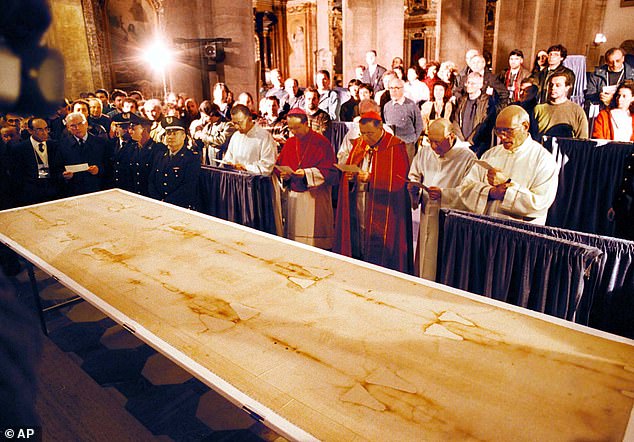
The Shroud of Turin (pictured) is believed by many to be the cloth in which Jesus’ body was wrapped after his death, but not all experts are convinced it is genuine.
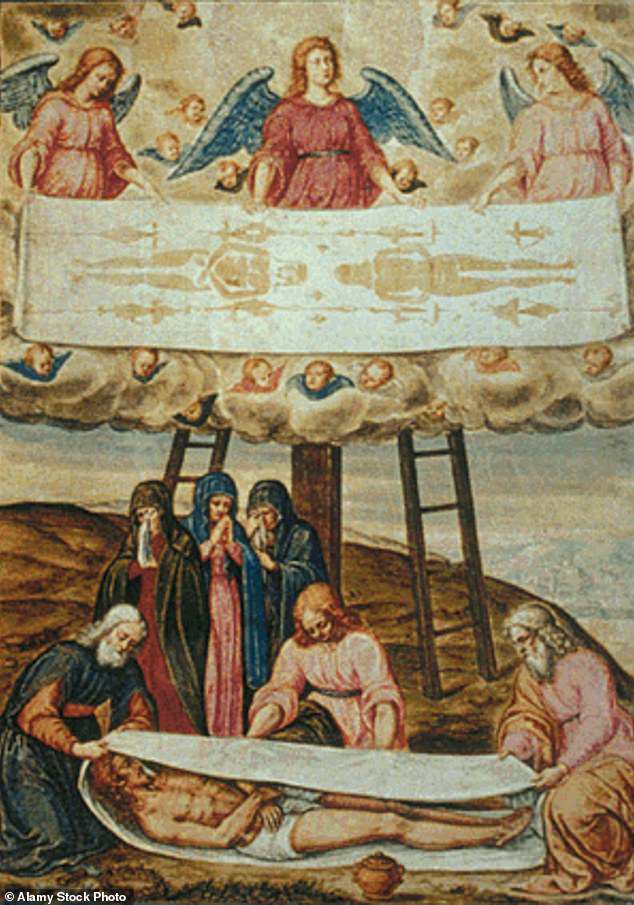
The Bible says that Joseph of Arimathea wrapped Jesus’ body in a linen shroud and placed it in a tomb.
He discovered that it was painted with red and vermilion pigments in gelatin and that there was no blood in the samples, although some of his STURP colleagues questioned his findings.
Radiocarbon tests conducted in the 1980s also dated the shroud to the 13th or 14th centuries.
But this has also been questioned, with some saying the sample may have been from a later repair or could be contaminated in some way.
Professor Liberato De Caro, an academic and Catholic based in Bari, Italy, recently discovered that the object dates back 2,000 years, to the time of Christ, discrediting previous research from the 1980s.
Meanwhile, the Vatican itself has had different positions on the shroud at different times.
In 1390, Pope Clement VII declared that it was not authentic, but rather “a painting or panel made to represent or imitate the Shroud”, but, in 1506, Pope Julius II reversed course and declared that, after of all, it was authentic.
Modern popes have spoken of it with reverence, but have generally stopped short of declaring it genuine.
Moraes is publishing his study in the Elsevier preprint repository ahead of formal academic publication.

